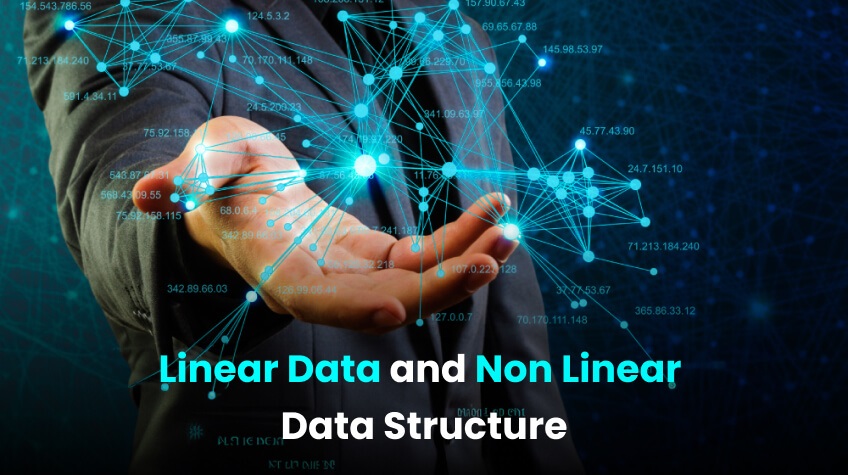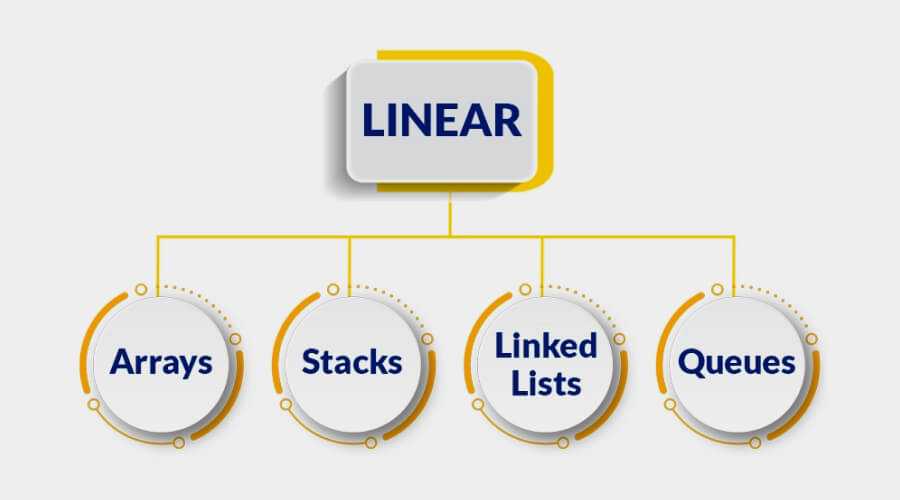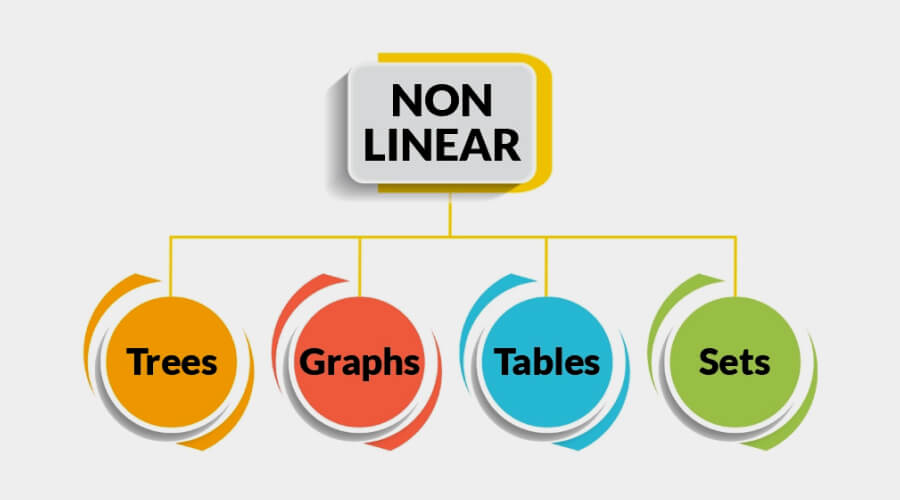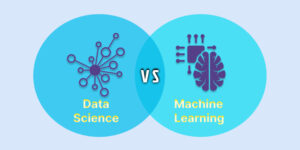
Computer science requires knowledge of the differences between linear and non linear data structures, as each kind has special benefits for processing and organizing data. Linear data structures include arrays, linked lists, stacks, and queues. They are simpler to traverse and access.
In contrast, non linear data structures like trees and graphs make effective hierarchical organization and intricate data linkages possible. Optimizing a variety of computing processes depends critically on these structures, which affect variables such as memory efficiency, access speed, and data processing complexity. This paper examines the main characteristics, applications, and uses of linear and non linear data structures.
What is Linear Data Structure?

Image Source – synergisticit
A linear data structure arranges items in a straight line, with each element related to its neighbor both before and after. Arrays, linked lists, stacks, and queues are a few instances. Access and traversal are made simple because data in these structures is kept in a single memory block.
Intuitive to use, operations like insertion, deletion, and searching follow a linear order. Because they are so simple and effective in situations where data must be handled in a specific sequence, such as algorithm implementations and simple data management chores, linear data structures are essential to computer science.
What is a Non Linear Data Structure?

Image Source – synergisticit
A non linear data structure organizes data in a hierarchical or interconnected manner, unlike the sequential arrangement in linear structures. Examples include trees and graphs, where elements or nodes can have multiple relationships, allowing for complex data representations. In these structures, traversal paths can branch out in various directions, facilitating efficient searching, insertion, and deletion operations.
Non linear data structures are essential for modeling real-world systems like social networks, organizational hierarchies, and database indexing. They enable more flexible and dynamic data management, supporting applications that require intricate relationships and faster access patterns for large, interconnected datasets.
Importance of Linear Data Structures
1. Simplicity and Ease of Use
Linear data structures like arrays, stacks, queues, and linked lists are straightforward and easy to implement. Their simplicity makes them ideal for beginners learning data structure concepts.
2. Efficient Memory Management
Linear data structures store elements in contiguous memory locations, making memory allocation and access more efficient and reducing the overhead associated with dynamic memory allocation.
3. Predictable Performance
Operations on linear data structures have predictable performance. For example, accessing an element in an array has a constant time complexity (O(1)), while traversing a linked list is linear (O(n)).
4. Sequential Data Processing
Linear structures are perfect for scenarios where data needs to be processed in a sequential manner. They are widely used in scenarios like reading data from a file, processing lists of items, and implementing algorithms that require a simple, linear traversal of elements.
5. Algorithm Implementation
Many fundamental algorithms, such as searching and sorting, are efficiently implemented using linear data structures. For instance, linear search and bubble sort operate directly on arrays or linked lists.
6. Stack and Queue Applications
Stacks are crucial for function call management in recursive algorithms, expression evaluation, and syntax parsing. Queues are essential for managing tasks in scheduling algorithms, handling requests in servers, and breadth-first search (BFS) in graph algorithms.
Importance of Non Linear Data Structures
1. Hierarchical Data Representation
Non linear data structures like trees represent hierarchical relationships naturally. This makes them ideal for modeling data that has an inherent hierarchy, such as organizational charts, file systems, and XML/HTML data.
2. Efficient Data Retrieval
Non linear structures provide efficient data retrieval. For example, binary search trees (BSTs) offer logarithmic time complexity (O(log n)) for search, insertion, and deletion operations, significantly improving performance over linear structures for large datasets.
3. Complex Relationship Modeling
Graphs are powerful tools for modeling complex relationships between entities. They are used in social networks, web page linking, transportation networks, and more, where relationships are not strictly hierarchical and can form intricate patterns.
4. Advanced Algorithms
Many advanced algorithms rely on non linear data structures. Examples include Dijkstra’s algorithm for shortest path in graphs, Kruskal’s and Prim’s algorithms for minimum spanning trees, and various tree traversal algorithms (in-order, pre-order, post-order) in binary trees.
5. Dynamic Data Management
Non linear data structures can handle dynamic data efficiently. For instance, AVL trees and red-black trees self-balance during insertion and deletion, maintaining optimal search times. Heaps are used in priority queues and heap sorting due to their efficient maximum/minimum element retrieval.
6. Real-World Problem Solving
Non linear data structures are crucial in solving real-world problems that involve complex and dynamic data. Applications include network routing algorithms, game development for AI pathfinding, and database indexing for efficient query processing.
Both linear and non linear data structures are essential in computer science, each serving distinct purposes. Linear data structures are preferred for their simplicity and efficiency in sequential data processing, while non-linear data structures excel in modeling complex relationships and hierarchical data, enabling advanced algorithms and efficient data management in various applications.
Uses of Linear Data Structures
1. Arrays
- Data Storage: Arrays are used for storing collections of data elements of the same type, such as lists of numbers, characters, or objects.
- Static Data: Suitable for scenarios where the size of the dataset is known beforehand and does not change, such as storing the grades of students in a class.
- Access and Manipulation: Efficient for indexing and accessing elements directly, making them ideal for implementing algorithms that require random access, like sorting and searching algorithms.
2. Stacks
- Function Call Management: Used in managing function calls and recursion by maintaining the call stack.
- Expression Evaluation: Useful for evaluating arithmetic expressions in postfix or prefix notation and for syntax parsing in compilers.
- Undo Mechanisms: Implemented in applications that require an undo feature, such as text editors and spreadsheets.
3. Queues
- Task Scheduling: Used in operating systems to manage processes in CPU scheduling, handle printer queues, and manage IO operations.
- Breadth-First Search (BFS): Essential in graph algorithms for exploring nodes level by level.
- Asynchronous Data Transfer: Utilized in scenarios requiring data buffering, such as in streaming data and handling requests in web servers.
4. Linked Lists
- Dynamic Memory Allocation: Suitable for applications that require frequent insertion and deletion of elements, such as implementing dynamic data structures like stacks and queues.
- Graph Implementations: Used in implementing adjacency lists for graph representations.
- Memory Management: Utilized in memory allocation algorithms and garbage collection processes in programming languages.
Uses of Non Linear Data Structures
1. Trees
- Hierarchical Data Storage: Ideal for displaying hierarchical data, like file systems, organizational structures, and XML/HTML texts
- Search Trees: Red-black, AVL, and binary search trees (BSTs) are search trees used for effective insertion, deletion, and search operations.
- Heaps: Applied to priority queue implementation, which are necessary for heap sort and algorithms like Dijkstra’s shortest route.
- Trie Structures:Uses of trie structures include effective key retrieval in spell checkers and autocomplete functionality.
2. Graphs
- Network Representation: Essential for modeling and analyzing networks, such as social networks, computer networks, and transportation systems.
- Pathfinding Algorithms: Used in algorithms like Dijkstra’s and A* for finding the shortest path in weighted graphs, which are crucial in mapping and navigation systems.
- Connectivity and Flow: Applied in problems related to network connectivity, maximum flow, and minimum cut, such as optimizing traffic flow and network reliability.
- Scheduling and Dependency Resolution: Used in project management tools for task scheduling, dependency resolution in build systems, and representing prerequisite courses in academic planning.
Linear data structures are used in scenarios requiring sequential data access and manipulation, making them essential for basic algorithm implementation and task scheduling. Non linear data structures are indispensable for handling complex data relationships and hierarchical structures, enabling efficient data retrieval, dynamic memory management, and solving intricate real-world problems in various domains.
In conclusion, the distinction between linear and non-linear data structures lies in their organization and the nature of relationships among elements. Linear data structures arrange elements sequentially, facilitating straightforward traversal and access, making them suitable for simple data processing tasks.
In contrast, non linear data structures exhibit complex relationships and hierarchies, allowing for efficient management of interconnected data and enabling advanced algorithms. The choice between these structures depends on the specific application requirements, with linear structures favored for sequential data handling and non-linear structures essential for modeling intricate systems and optimizing operations that involve dynamic and hierarchical data relationships in diverse computational scenarios.






